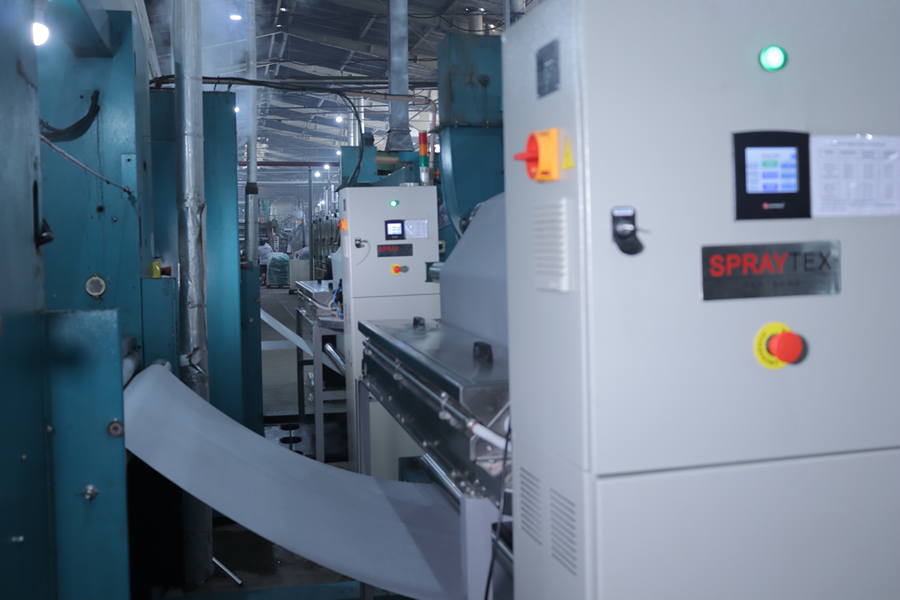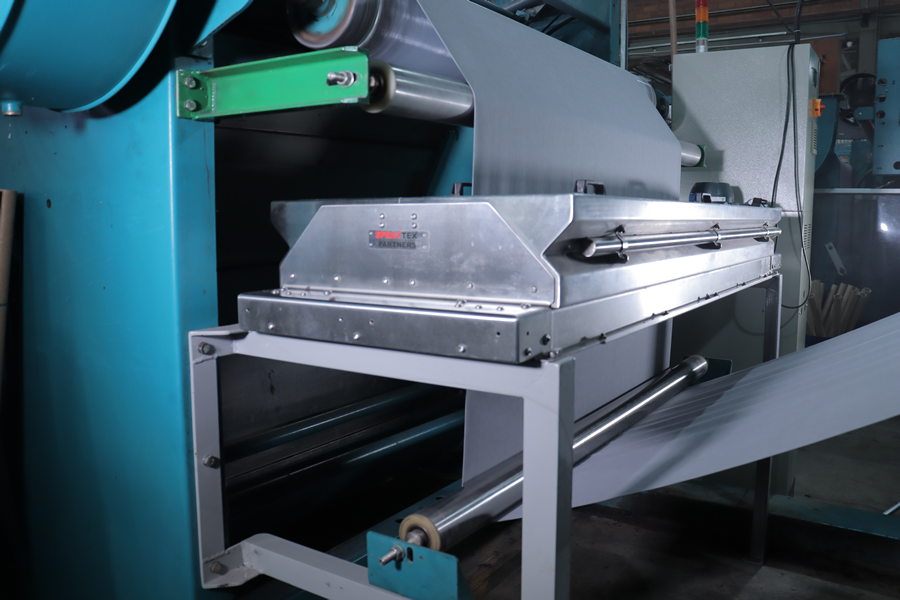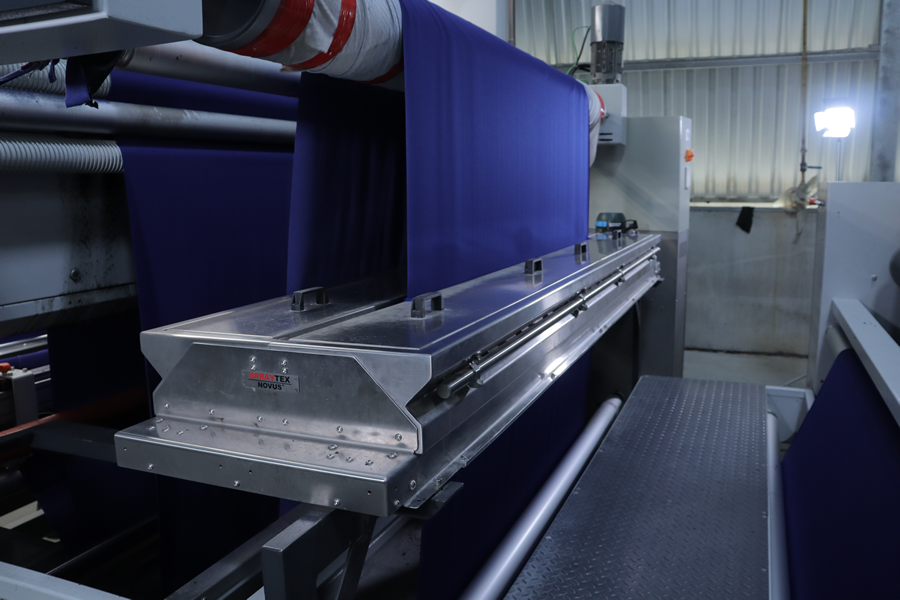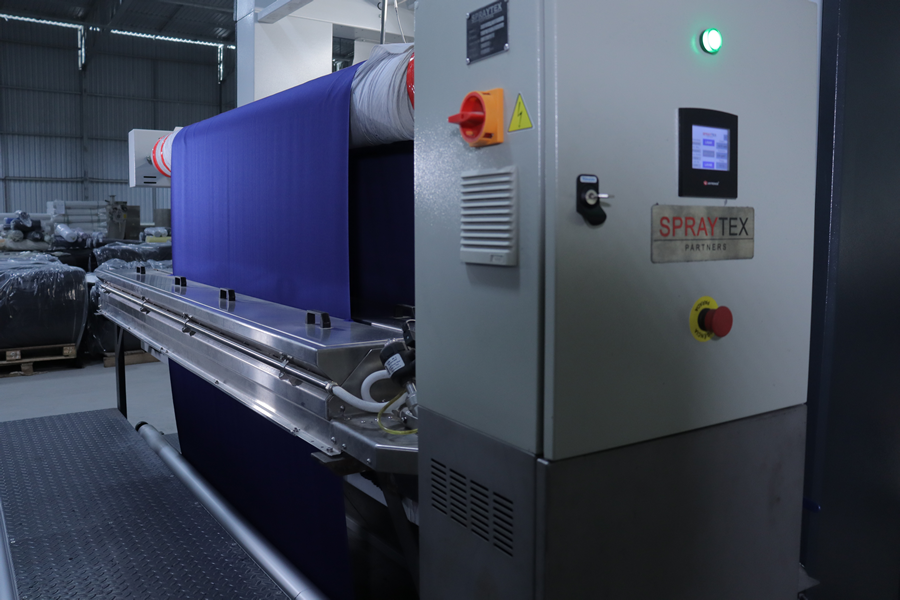MOISTENING OF WOVEN AND KNITTED FABRICS – NON-WOVEN




Aplications
Moistening, preparing, and finishing woven and knitted fabrics
A minimal application with rotary spray technologies allows significant savings in water and energy, particularly drying energy. In addition, the amount of residual liquids is reduced, which reduces disposal costs. Here are some selected application examples in textile finishing:
Stenter frames (exit).
Restore exact moisture to overdried fabrics after the drying process. Knitted goods are often sold by their weight. Avoiding production loss due to overdried knitted fabrics is essential through optimal moistening. Thus, the profit can be increased accordingly, and the producer’s customer can obtain an optimal moistened fabric.
Additional benefits: avoiding the condition time between the process and the transport to the customer, eliminating antistatic, better hand…
Compressive shrinking ranges.
The Compacting – allows finishing in predictable residual shrinkage
It controls the shrinking range for knitted goods in open-width and tubular forms. The knitted goods stretch lengthwise, representing the most significant potential for shrinking. Therefore, it is essential to moisturize the fabric during compacting to get dimensional stability; through the desired moistening, you should moisturize with quantities between 8% – 18% of the dry weight.
Calendering
Web and knitted materials are moistened one-sided, adding 10%-15% water. Better compression and gloss of such kind of material is due to this optimized moistening.
Sanforizing ranges
This process aims to achieve highly constant shrinkage, resulting in the fabric’s dimensional stabilization.
Before the Sanford process, variations in fabric density were caused. Improving the residual shrinkage results is indispensable to moisture continuously and accurately during the sanforizing process.
Operation is ultimately operator independent. This feedforward control strategy ensures all of the fabric is uniform in humidity – and residual shrinkage.
Moistening – Festoon Steamer (print)
Task: Moistening with water on the non-printed side. Applications quantities are for cellulose fabric 15%-25% and for cotton 8-15%.
The printing of reactive dyestuff requires urea to get the dyestuff into the fiber. This process takes place inside the steamer, assisted by humidity and temperature.
BENEFITS
Technical/Economical
Practical
Ecological
Technical Information:
Electrical power source: 380 VAC/60Hz/3ph or 380 VAC/50Hz/3Ph
Spray range: different configurations for woven, non-woven and knitted goods are available in working widths of 1000-5700 mm
Spray application rate: 50 – 3800 ml/meter/min